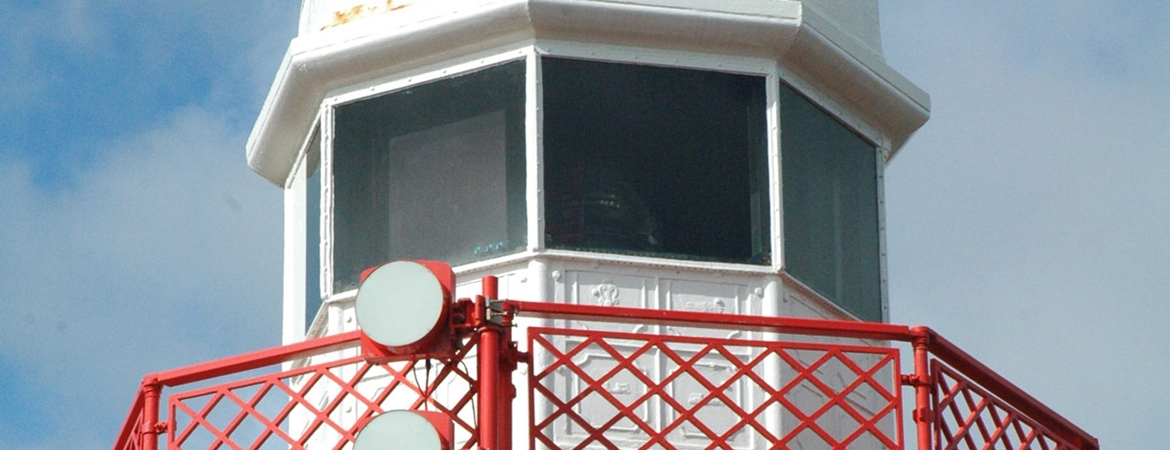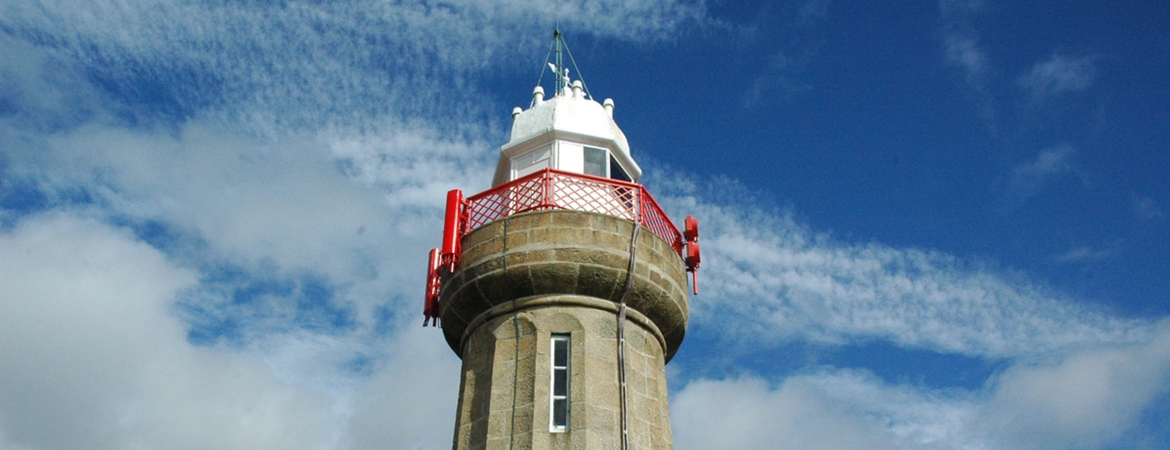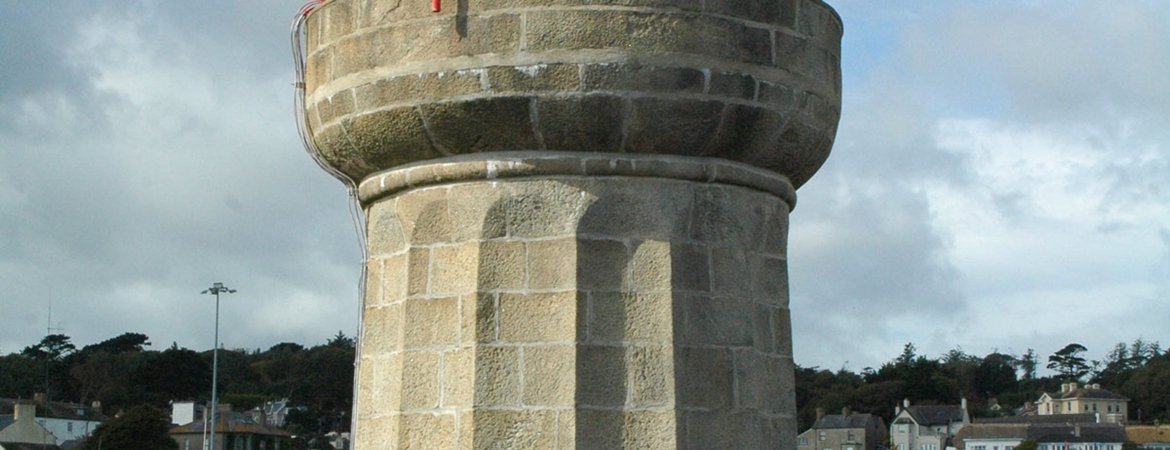Dunmore is a picturesque seaside town at the western entrance to Waterford Harbour, a favourite place with tourists and a very busy fishing port.
In 1814 when Dunmore was a very small fishing village nestling in a sheltered cove it was chosen by the Post Office to be the Irish terminal of a new Mail Packet route from Milford Haven.
The Post Office engaged a Scottish Engineer, Alexander Nimmo, to design and build the new harbour for which he used the local old red sandstone conglomerate. His design included a magnificent lighthouse which took the form of a fluted Doric column with the lantern on top of the capital.
Nimmo must have gone to the same foundry for the cast iron lattice balcony as his Scottish lighthouse contemporaries Thomas Smith and Robert Stevenson and only one Irish lighthouse has this type of railing, that is Haulbowline at the entrance to Carlingford Lough, established 1824.
On 1st July 1818 the G.P.O. were expecting the first packets to be stationed at Dunmore and their Secretary, Sir Edward S. Lees asked the Ballast Board to allow them to establish a temporary light on the end of the pier which was under construction; the request was granted.
In October 1824 Mr. Nimmo reported through the Post Master General that the lighthouse column at the pier head was completed and should be examined by the Board's Inspector. This was carried out in March 1825, and in Mr. Halpin's report he mentioned that he had pointed out to Mr. Nimmo several alterations and improvements which would be completed in a few weeks. He also commented on Mr. Nimmo's statement that steam packets rejected a considerable quantity of small coals as unfit for their purpose and it was sold at a low price; it could be advantageous to convert portion of this coal in a small gas apparatus to supply the lighthouse instead of more expensive oil. Mr. Halpin stated that gas making would be more expensive compared with the cost of the small amount of oil required for five oil lamps, also coal gas would be detrimental to the silver on the catoptric reflectors used behind the oil lamps.
Sir Edward Lees informed the Ballast Board in October 1825 that the lighthouse had been ready some time back for the reception of the lamps and reflectors; the Board instructed Mr. Halpin to affix the requisite apparatus.
There is no exact date as to when the light was established but it has to be late October, November or December 1825 because Inspector Halpin reported on 2nd January 1826 that Dunmore Lighthouse required sundry repairs and that the Keeper and his family were living in lodgings remote from the Station; the accommodation at the lighthouse was not habitable due to dampness.
The light as established was fixed, catoptric, 3rd order, showing red to sea and white or clear to land, it was 13.4m (44 feet) above high water and the tower painted white. In 1903 white gave way to the natural stone colour.
The passenger and mail service from Milford to Dunmore operated until about 1835 when Waterford became the Irish terminal thus saving a 16km (10 mile) road journey from Dunmore.
The oil lamps and reflectors were used until 1922 when on 15th June the light was converted to acetylene using a water to carbide generator and a twin burner in a 4th order optic, also the station became unwatched under the care of an attendant instead of a lightkeeper.
Acetylene gave way to electricity on 24th January 1964, the power for the 100 watt 100 volt lamp came from a 100 volt battery with a charger run off ESB mains. Since August 1981 the optic lamp is powered from ESB mains electricity and if a mains failure occurs an emergency standby diesel generator automatically takes over. The optic is a 250mm cylindrical refractor with L11 lamps.
The East Breakwater pier was extended by approximately 91m (300 feet) during the mid 1960's and two temporary red lights were erected towards the end of 1965 and early 1966 to mark the end and mid-way point of the extension. At sunset on 1st July 1971 the temporary lights were discontinued and replaced by permanent flashing lights -red on the East Breakwater extension and green on the West Wharf. At the same time the sectors of Dunmore East lighthouse were changed to White = 225°-310° (85°) and Red = 310°-004 (54°) and obscured elsewhere.
Dunmore East Lighthouse
|
Position: |
52°08.935' North 06°59.337' West |
Aids to Navigation |
|
|
Sectors: |
W225°-310°(85°).R310°-004° (54°). |
|
Height of Tower: |
16 metres |
|
Height of Light MHWS: |
13 metres |
|
Character: |
Fl WR 8s |
|
Range: |
White 17 nautical miles, Red 13 nautical miles. |
|
Radar Beacon: |
|
|
AIS: |
|
Tags :
lighthouse
,
Dunmore







